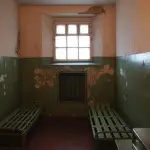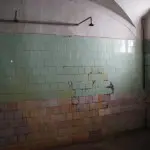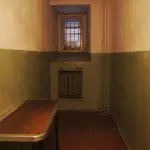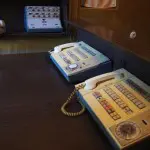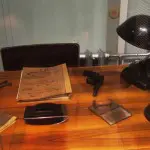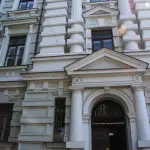The official name of the museum is The Museum of Genocide Victims but locals refer to it as the KGB Museum. Regarded by most guidebooks as a must-see, we tend to agree, with the proviso that some will have a problem with the chilling nature of such an exhibition.
The KGB Museum is housed in a large building on Gedeminas Avenue completed in 1890 when Lithuania was part of the Russian Empire it was designed to house the court of the Vilna Governorate. During the German occupation in WWI, it was used by the German Empire, its occupants shifting with whoever was in power at the time, Bolsheviks, the Polish, until in 1940 when Lithuania was invaded by the Soviet Union its basement became a prison, the invading authorities needing somewhere to put all the people they were busy arresting until deporting or executing them. As soon as the German army invaded the country in 1941 the Gestapo moved in and used it as their headquarters until the Red Army retook Lithuania in 1944. From then until 1991 the KGB used the building as offices, a prison and an interrogation center.
The museum’s exhibits, display cases and texts recount the suffering inflicted by the KGB on the country. Mass deportations to forced labour camps, persecution, arrests, torture and executions were all part of their repertoire. One of the most compelling stories told is that of the Forest Brothers, partisan resistance fighters who kept up an armed resistance in the face of overwhelming odds against the occupying Soviet army. Until 1953 they demonstrated their love for their country in a heroic but hopeless struggle, trying to show the world that they did not accept this invasion. Also explored in some detail are the actions of peaceful resistance, of women and priests imprisoned for publishing anti-Soviet pamphlets. The Soviet Armed Forces referred to the partisan resistance as ‘The Invisible Front’ and this is the name of a 2014 film that tells the story of the Forest Brothers, which tells the story of Juozas Luksa, one of the leaders of the Forest Brothers.
On the above-ground floors you will also see rooms that were used as the offices of the KGB, including a listening room. Venturing down to the basement you can see the horrific conditions endured by the prisoners, holding cells, solitary confinement cells, cells used for torture including a padded cell with straitjacket attached to the wall and most disturbing of all, an execution chamber.
There is one room of the museum that details the other genocide committed by people who worked out of this building, that of the Lithuanian Jews who were murdered by the Nazis during WWII but the major focus of the museum as a whole is the genocide of Lithuanians by the Soviet authorities.
The Museum survives on the very reasonable entrance fees it charges (under 2 Euros for adults) and donations from the public who see the museum as the best way to preserve the memory of this time. It is closed Mondays and Tuesdays, and is open Wednesday to Sunday 10AM-6PM except Sunday when it closes at 5PM.
Planning a trip to Vilnius? We’d love to put together a Vilnius travel package just for you. Get in touch to find out more!
Aukų gatvė 2A, Vilnius 01400, Lithuania

Charlie is head of marketing at JayWay Travel. A long-term Prague resident, his interests are cooking, eating out, cycling, skiing and of course, travel.
